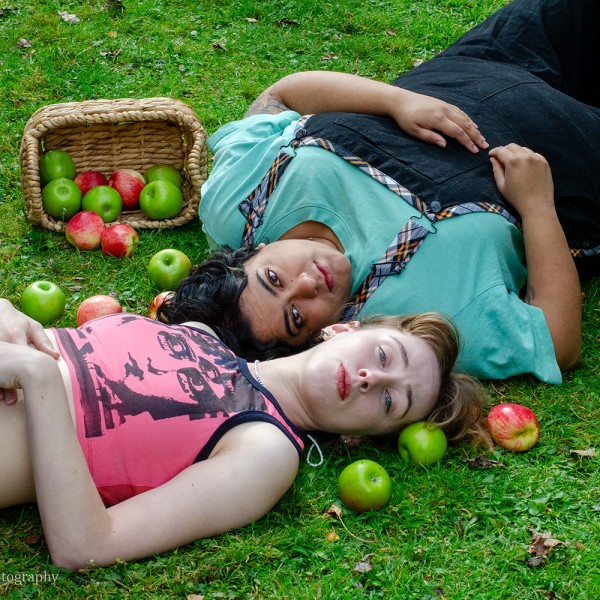
Presented by: Realscape Productions
Running at Odlins Plaza till 27th July 2025
Reviewed by: Madelaine Empson
By now, anyone wandering Wellington’s wonderful waterfront would have spotted two large shipping containers set up at Odlins Plaza. In giant block letters, one reads FLIGHT, the other SÉANCE. But what worlds wait inside?
DARKFIELD is an immersive audio experience that takes place in total darkness, but not before audiences see the inside of the containers. This gives us a setting for the experience to unfold and grounds us in reality before the rug is pulled out from underneath us (figuratively, but it sure feels literal) and our imaginations take flight.
Which brings me to FLIGHT. With the Australian and New Zealand set built by Show Works, stepping inside this container elicits a collective audible gasp. It looks practically identical to the right side of an airplane cabin, complete with round windows through which a faint glow emits. Familiar sounds you’d hear on any flight beep and crackle through the provided headsets. Hilariously, and without being asked to do so, many of us fasten our seatbelts. On small overhead screens, flight attendant Eugénie Pastor relays safety instructions and our captain, Nigel Barrett, dials in. Cue lights out.
It's pitch black as the sound of our plane taking off blares in our ears. I nearly get vertigo and, as I thrust back in my seat unwittingly, I curse inwardly for having forgotten my sucky lollies. Then I remember… this isn’t real! Talk about suspension of disbelief.
Fictional babies start to cry from multiple seats as their ears pop from the altitude and I find myself counting my blessings I’m not seated next to one of them before remembering, again, that I’m on the ground in Wellington. A hilarious highlight of the 360-degree audio performance comes when our flight attendant tells the babies to stop crying, please, and dead silence ensues.
The story that unfolds from here is a touch on the nose radome, particularly with the reference to a passenger named Mr Schrödinger. As someone who genuinely felt like they were on an airplane in the first five minutes, the script’s diversion into fantastical realms muddied my experience. I’d be curious to see a storyline that leans more on the merits of such a brilliant and unique concept – perhaps one that takes audiences on a regular flight filled with interesting character studies or relationship (aero)dynamics. Nevertheless, I’d recommend DARKFIELD: FLIGHT for the highly detailed set and the singularity of the experience: apart from next door at SÉANCE, you’ll never see (or hear) anything like it!
SÉANCE sees audiences enter a room single file, peeling left and right to sit on either side of a large rectangular table that runs the length of the shipping container. Small golden bells dangle on red strings, but other than that, the set (built for Australia and New Zealand by Form Imagination) is stark, cold. We’re instructed to place both hands on the table and to not, under any circumstances, take them off for the duration of the experience, lest we break the connection and unleash a spirit. Nervous energy crackles down the table like electricity. When the lights go out, Tom Lyall performs a séance through our headphones, seemingly stomping up and down the table and whispering sweet spooky nothings in our ears. I can’t spoil the story here, but there’s a certain melting, squelching sound that still makes me shudder!
With artistic direction from David Rosenberg and Glen Neath, executive direction from Andrea Salazar, and creative direction from senior creative producer Victoria Eyton, DARKFIELD is produced by Amy Johnson and Nathan Alexander of Realscape Productions. I would’ve loved to have seen more character development throughout both stories, but wholly enjoyed my time in the alternative worlds, the heart-palpitating dark fields conjured up by this creative team. Enter at your own peril!












